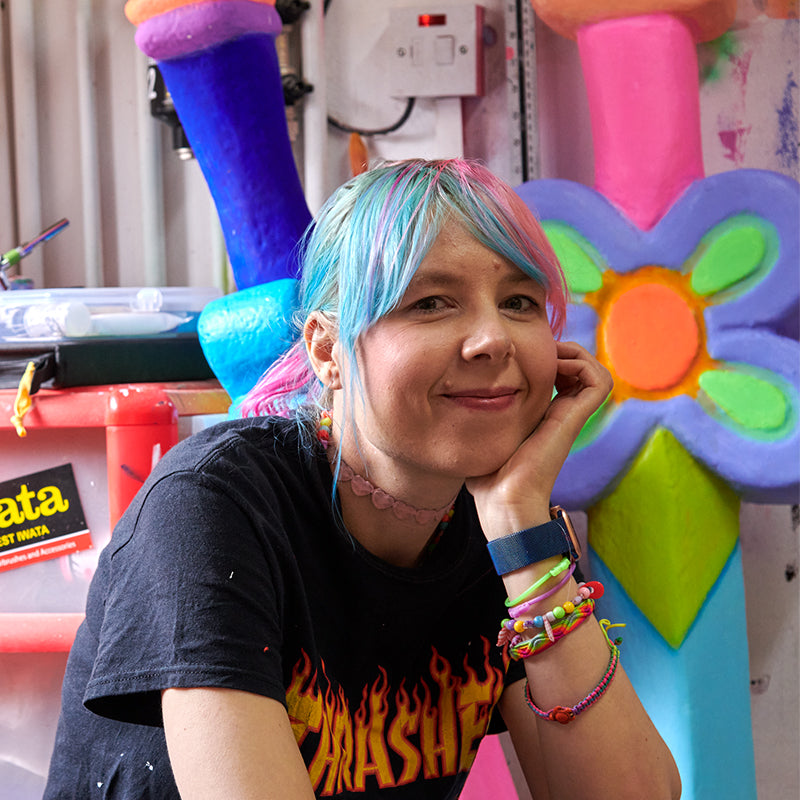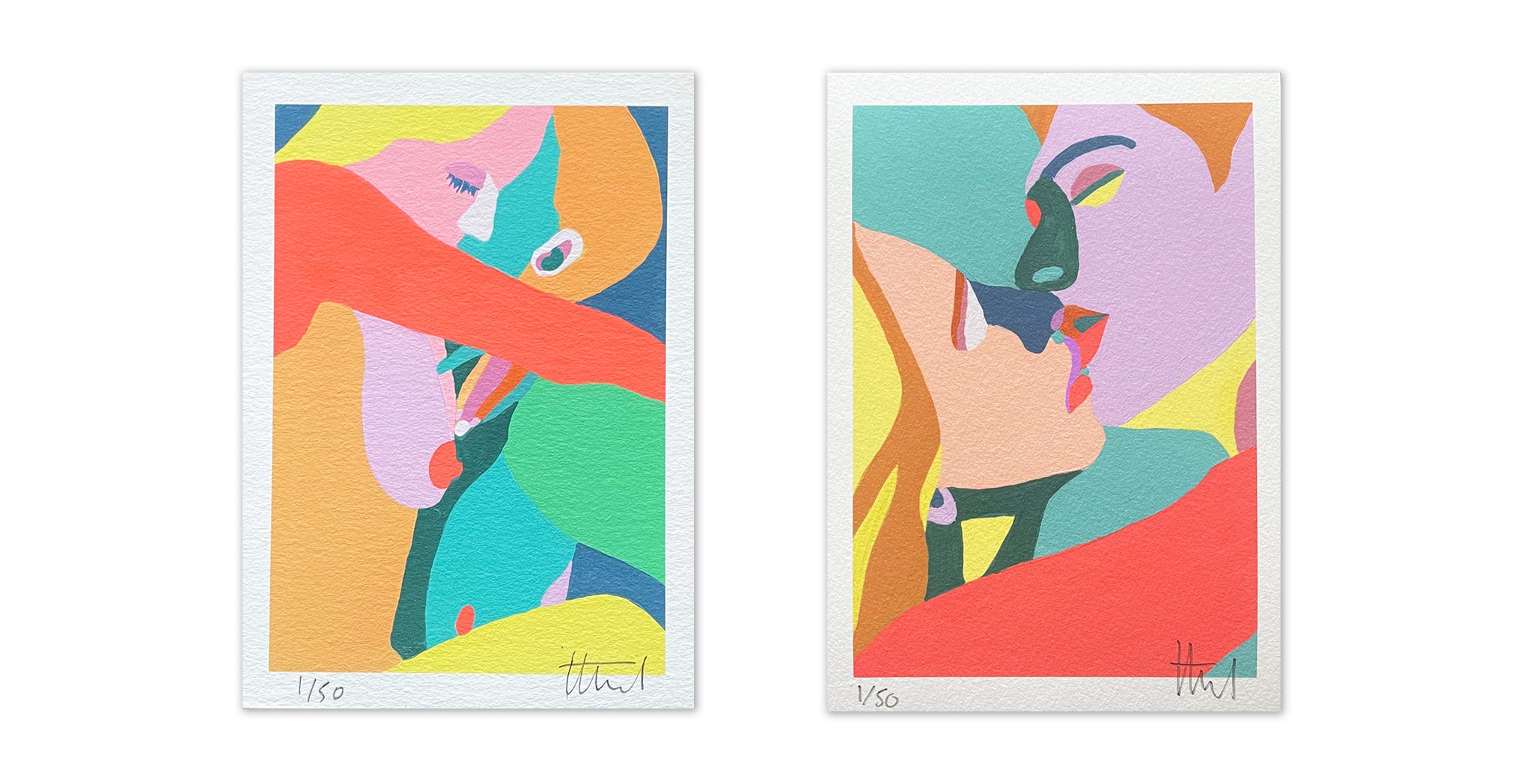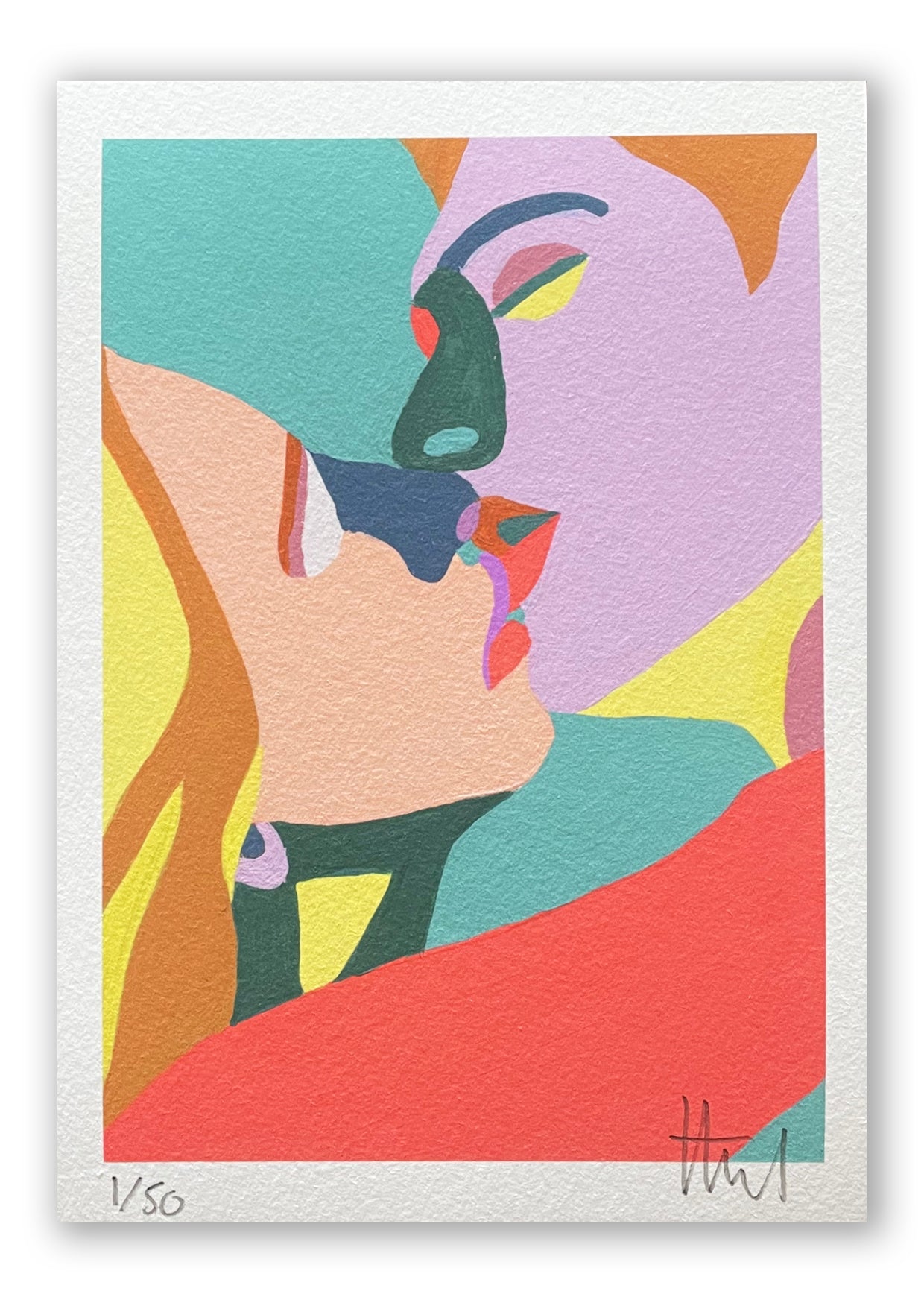In this blog post we explore a project which shares similarities with Art on a Postcard’s mission to raise money for The Hepatitis C Trust: Artist Trading Cards.

M. Vänçi Stirnemann, First Invite to Artist Trading Card Session. [https://www.artist-trading-cards.ch/]
What are Artist Trading Cards and how did they start?
Initiated as a cultural project by Swiss artist M. Vänçi Stirnemann in Zurich in the nineties, Artist Trading Cards, or ATCs, have since evolved into a global trading network with a life of its own. Their premise is simple, the cards must be self-produced works created on a 64 x 89 mm (2.5 x 3.5 in) support to resemble the dimensions of traditional sports trading cards. Embodying a practice of trade which has taken place for decades in the most avid sports communities to childhood collectibles, these miniature artworks continue to foster communities of artists today.
On April 23, 1997, Vänçi staged a performance at his former bookstore turned exhibition space INK.art&text, in which he displayed 1,200 of his own ATC artworks. Following the event he organised the very first community trading session on May 31st, in which artists were invited to bring their own miniature works to trade with each other. The core value of Vänçi’s idea resides in the banning and strong opposition to the buying or selling of ATCs for monetary profit:
"ATCs and money don’t mix."
Trading sessions are envisioned as commerce-free zones, existing outside of the systems which fuel the traditional art world. Instead, ATCs generate value in the exchanges and interactions which take place between people; the artworks bring communities together but they are secondary to the sense of togetherness that one feels when they take part.
Shortly after the sessions in Zurich, the concept was adopted by Vänçi’s friend Canadian artist Don Mabie, also known as Chuck Stake, who organised the first trading session in Canada at The New Gallery in Calgary on September 27, 1997. For Mabie ATCs are important in their ability to circumvent the gallery system and provide numerous opportunities for artists participate in the distribution of their own works.
Since its inception, trading sessions have taken place in Switzerland, the Netherlands, Canada, Germany, Finland, Australia, and the United States.

Don Mabie, Artist Trading Card, 64 x 89 mm. [https://www.artist-trading-cards.ch/ ]
History of Miniatures and Trading Cards
The minute scale of Artist Trading Cards can be situated within a much longer history of miniature art practice. For centuries, the idea of the miniature has captivated the attention of artists and patrons, reflecting both novelty and incredible skill. The word miniature itself is derived from the pigment ‘minium,’ which is used in the small detailed illustrations within medieval illuminated manuscripts. In the sixteenth century, miniature portraiture and painting reached its peak popularity as portable and affordable works of art. Although traditionally painted on vellum, ivory, or enamel, miniatures by painters Hans Holbein and Nicholas Hilliard were even painted on the reverse of playing cards. Despite its immense popularity, photography surpassed the art form after the Daguerreotype was invented in 1839.
In the late nineteenth century, miniature ‘trade cards’ began to circulate which featured illustrations to advertise a tradesman’s business. Characterised by vibrant colours and humorous illustrations, the cards soon became sought-after collectibles for Victorian Era customers who began to display them in albums. Often created in a series, the cards promoted repeat business for those who wanted to collect every variation. Such was the impact on the public that it was denoted internationally as ‘Cardomania,’ and spread to the United States. In 1909, as a response to the highly competitive cigarette market, the American Tobacco Company produced the most famous series of collectable baseball ball trading cards to date, known as T-206. Nonetheless, following the dissolution of the company and the start of WWI, the distribution of these trading cards declined once again.
In more recent years, from the late twentieth century to the present day, smaller format artworks such as ATCs and postcard-sized works have re-established their popularity as affordable and accessible ways to engage with art.
What is the cultural impact of Art Trading Cards?
Trading cards, in general, have been a part of pop culture for decades, spanning sport, games, film, and education, and can work as indicators of historical trends or changes. Vänçi’s Artist Trading Cards are similar in their link to pop culture; however, they are fundamentally separate from consumerist driving factors which fostered the first ‘trade cards’ and baseball cigarette cards. In this way, the ATC cultural project can be seen as an ongoing form of institutional critique. Although occasionally exhibited, these artworks remain separate from gallery and museum collections, actively creating connections between people in an increasingly disconnected world. These often overlooked and invisible networks of art communities prove that anyone can create and enjoy art.
Find out more:
Artist Trading Cards website: https://www.artist-trading-cards.ch/
ATCs for All website: https://atcsforall.com/about/


















